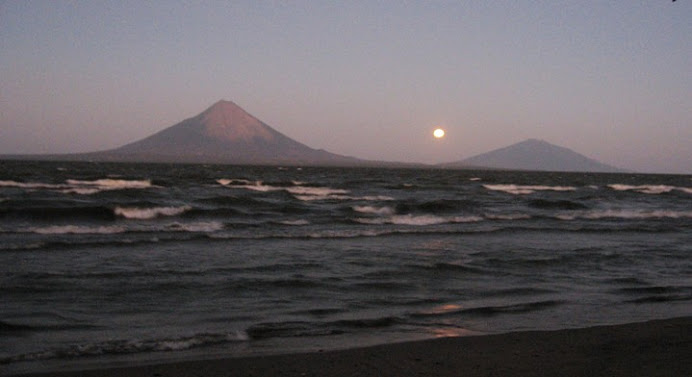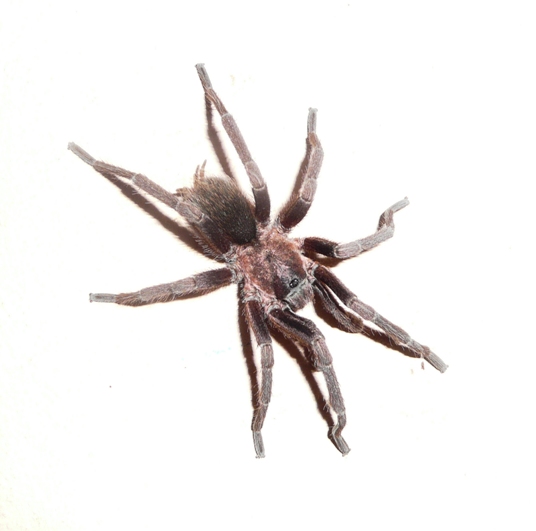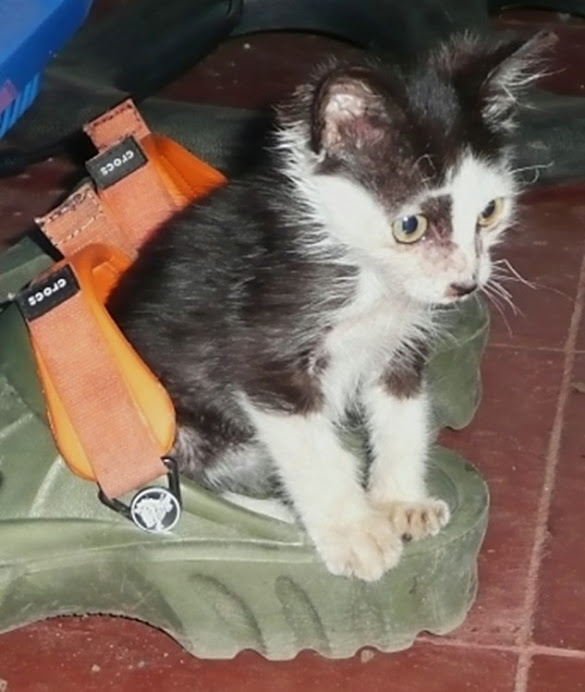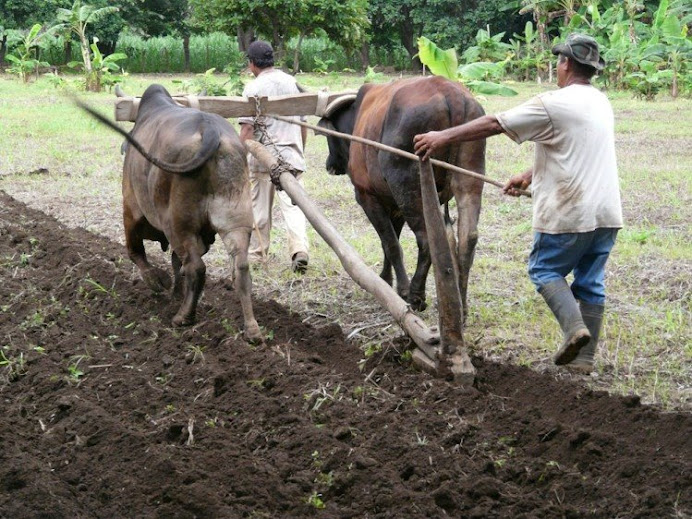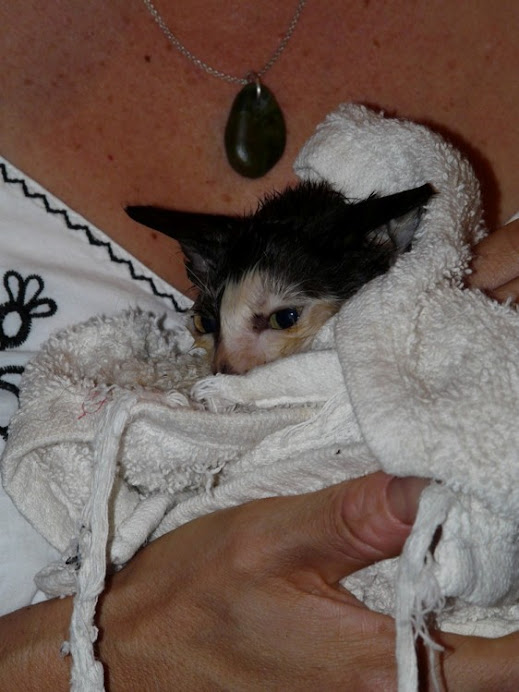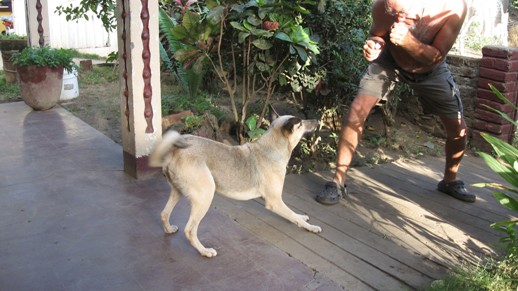Entomology 101
It feels as though we haven’t stopped moving since the holidays began, and yet as I review the pictures for the blog, they all seem to be of various insects…two of which were found on Ometepe Island, and the third, nasty thing, landed on my skirt up at Laguna de Apoyo. But more about that later.
We returned to Ometepe twice in early January. The first time so Pat could assist in the installation of an on-demand propane-fired hot water heater at our friend Cindi’s house and so we could take a leisurely (ha!) bike ride around the southern volcano, Maderas, with Cindi and her professional cyclist boyfriend Brian. Ok, maybe he’s no longer an active professional, but he is very serious about bicycles and biking, which was a good thing for my poor abused bike as he took one look at the gears, cringed, took a deep breath, and tackled them head-on. As a result, they actually shift again, beyond the three or four gears I’d become accustomed to using. This turned out to be a very good thing indeed once the ride began, and rather than the coast-hugging dirt road we’d imagined, it was more like one of those mountain bike parks, with actual inclines and occasional declines, dips, bumps, holes, crevasses, gravel, sand, puddles, and of course the usual collection of cows, chickens, pigs, horses, kids, drunks, and the odd cat or two. Oh, and stunning views of the lake, the volcano, the mainland… About one hour into the four hour ride, as we bumped our way down one of the rare descents, Pat’s front tire hit a coconut husk and over he went, ending up with the right handle bar more or less lodged in his chest. Or it would’ve been had his end caps not been firmly in place. As it was, he had a hell of a bruise, but it didn’t keep him from climbing back on and continuing the ride. I stopped at the next ‘pulperia’, or little shop in someone’s home, and asked the woman if she had anything for pain. She looked blank and said, “Que?” I asked again, rewording the request a bit. “Que dice? (What did you say?) No Inglés.” I was getting frustrated, but fortunately there was a local couple also waiting at the window, and the man said to her, “She needs something for pain. She’s speaking Spanish!” The woman looked skeptical, but went to the back and returned with two small reddish pills labeled “Dolofin”. Since the word for pain is ‘dolor’, and the word for end is ‘fin’, they seemed promising. Pat gobbled them down and professed to feel less pain (until the following morning…)
The rest of the ride was uneventful if a bit challenging, and we were very happy when we finally arrived at El Encanto, a local guesthouse run by an Aussie/El Salvadoran couple. We’d stayed there a couple times, and were well acquainted with their excellent alternatives to standard Nicaraguan cuisine. Nothing like a chicken curry after a long, hot ride!
We returned to Ometepe just a couple days later, this time with the Scotts and Amanda in tow. (You may recall from the last blog that one of the Scotts and Amanda are newlyweds; the other Scott was a best man.) We had the pleasure of riding the big new ferry again, and once again were left shaking our heads as this massive craft “docked” on a spit of sand. We then met our pre-arranged minibus to drive us out to Cindi’s place, about 1.5hrs south. (The island is bigger than you’d think, plus the roads on the southern end are wretched.) In the afternoon, we thought it might be fun to rent kayaks and head up the Rio Istiam, a river supposedly loaded with indigenous birds and beasties, including caymen. We ambled over to the restaurant/kayak rental place only to be told they had just rented out their last four kayaks. This news was met with more elation than I’d have expected—turned out everyone was relieved to have an excuse to just relax for a change. After finishing lunch there, Pat went for a wander and returned to the table clutched in the pincers of a gigantic beetle. A slight exaggeration, but not much. This beetle he found was about the size of my cheapie non-flip cell phone, and weighed four times as much. I’ll let the picture speak for itself here. Even the guys who run the restaurant were surprised by its size, and almost everyone wanted to pick it up and take its picture. After blinding it with flashes and traumatizing it with curiosity, and after it did in fact nip Pat with its pincers, he scooped it up and carried it back to an undisclosed location.
The next morning some of us went on a hike to and through the property of another expat couple, where we encountered a form of thorn tree, swollen with the rains of a long wet season, and many platano (plantain) trees dropping their huge, erotic pods. In the evening, we wandered down the road to a tiny restaurant where Pat and I had had an excellent traditional Nica dinner last year. They often have fish as well, but on this occasion, told us they only had chicken. What they failed to specify was that they meant that literally. They had a chicken. Just the one. For all seven of us. Yeah…I got the back. I didn’t immediately realize it was the back as it was creatively covered in a mass of sautéed onions and tomatoes. I kept trying to cut off a piece of actual meat with no success. When I finally scraped off the sauce, I beheld a fragile skeleton of grilled bones, and a bit of skin. This is very unusual! In all the many, many, many chicken meals we’ve had since arriving in Nicaragua, there has been a broad range of flavors, but there has always, always, been meat. Other people chimed in after I voiced my dismay. “I think I got the ribcage.” “I got part of a wing and something else…” “Ha! I got a leg!” Whoever got the breast was smart enough to keep his mouth shut. Fortunately the rest of the meal was plentiful and delicious; gallo pinto (red beans and rice) being a hell of a filler.
We left the island on one of the smallest ferries, a first for all of us. Other than the noise of the engines, it was a good ride. Fast, not too rough, and the seats from the old US school busses were comfortable enough. Once back on the mainland, we took them on a whirlwind tour of our place out in Tolasmaydas, to Jim’s restaurant for burgers, and then we piled into the jeep and headed north, to Laguna de Apoyo and our friend Fred’s place. It was here I encountered the evil bug. We had been told in November to watch out for a certain type of caterpillar: large, bright green (sometimes with spots of other colors), and very fuzzy. Their fuzz is coated with something extremely toxic, and any contact with it results the skin turning bright red and massive levels of burning, stinging pain. Pat came across one out by the house one day and the kids immediately slaughtered it. More recently, we were told their season was over, and I was sorry I never got to see one. Umm hmm…so we are all standing around out in Fred’s courtyard, and I am talking to Carmen, his wife, when I feel something on my skirt, just below-right of my left hipbone. I brush at it absently, too dark to see, and in the middle of a conversation. It doesn’t move and now the last two fingers on my right hand hurt. I turn into the light and look down—and there it is, firmly attached to me—a 3” bright green furry thing. Carmen screams, I jump back, Fred rushes over and begins furiously prodding it with a stick until it falls off at which point he stomps on it. “Wait!” I cry, “Let me at least get a picture of it.” I dig out the camera and manage to get a shot in before Carmen grabs Fred’s beloved cane walking stick and begins bashing the hell out of the crumpled wad of green slime. Fred grabs the cane, tells Carmen to calm down, and stomps on the beastie a few more times. “It’s like trying to stomp on a piece of rubber,” he announces. By now the backs of my two fingers and the adjoining knuckles are burning and throbbing. Carmen hands me a tub of ice, and I immerse the afflicted hand. It brings some relief. I keep my hand in the ice for the next hour, off and on, until I fall asleep (where I dream of butterflies), and when I awake the next morning, the pain is gone.
We deposit the Scotts and Amanda at the Managua airport, worn out from their trip but professing to have enjoyed every minute in Nicaragua. Grabbing a detailed map of the city, we head out on a search for shower tile. Our options seem limited to either hideous generic shiny white or faux-hand painted ceramic, or insanely overpriced, imported from Italy glass. We are rethinking the shower. The ceiling, however, is coming along very well. Pat and Daniel have finished the bedroom and have begun work in the living room. It has been a more complex job than anticipated as the cane is highly irregular and the wood needed for the frames was tweaked and bent. But in spite of the obstacles, it looks beautiful. Once it’s done, Pat will begin work in either the kitchen or bathroom…at last, the end is in sight.
On the political front, I attended the swearing in of the new mayor of Buenos Aires last weekend. (Pat had planned to go until he found out there would be no food, no drinks, and no shortage of long speeches.) We’d been invited by a guy we call Sandino, after Nicaragua’s early-20th-century hero, and from whom the Sandinistas took their name. His real name is Orlando, but once he learned of our nickname for him, he became even friendlier. Apparently he’s a guard for one of the big plantations out here, but his heart lies with the FSLN, and he seems to play a role in each administration. One night we were up at Rancho de Pancho with Edwin and Reyna and he sat down at our table. That he’d already been drinking for a while became clear as he alternately accused me of working for the CIA and quoting me the poetry of Rubén Darío, Nicaragua’s foremost poet. “Ud. es C-Uh, no?” (You’re CIA, right?”) That their pronunciation of CIA is identical to the word for chair (silla) made things a bit confusing at first, but once we were on the same page, I began with denials, but eventually gave up as he didn’t believe me anyway, and at one point as he was telling me he knew I was CIA because there was no other reason for me to be in Nicaragua if I wasn’t a missionary, I reached down, pulled off my flip flop, held it to my ear, and said, “Si, si el está aquí. Si, está hablando de asuntos…” (Yes, yes, he’s here. He’s talking about matters…) He just stared at me for a minute, eyes wide, mouth agape, and then began to laugh. At least as of this writing, he hasn’t brought up the CIA again.
As for the swearing in, it was about as expected. A few hundred people gathered, speeches were made, a local woman danced. The new mayor apparently thanked me in his speech, something about gratitude toward the North American woman who had become part of their small community and hoped to make a difference. I missed it as at that moment I was trying to salvage what remained of Milagro’s ice cream cone, the majority of which had relocated to her lap. Still, it did explain why at one point all these heads turned in my direction…
Finally, the big news: the Sprout office and newly opened Alaska English School are in business. I found a place to rent right on the main square in Buenos Aires, next to the Police, across the park form City Hall. A friend and cousin of Edwin’s painted the signs (although he didn’t quite finish due to a powerful hangover that had him show up at 1pm rather than 8am the day of the 3pm opening), and we had a small open house last Sunday. I hired a neighbor to do the cooking, just hors d'oeuvres, finger foods. For this she told me she’d need a lot of toothpicks. I brought two boxes that claimed to have 250each. She called me later to tell me she needed more. “How can you have used 500 toothpicks, Mari?” “No, no,” she explained patiently, “the 250 refers to how many pointed ends there are! So each box actually only contains 125 toothpicks.” Since a box costs roughly 40¢, I’m going on the assumption this was not a crafty plan on her part to exploit my generosity…nevertheless, Pat was so bemused by this account that he bought another box and sat in the jeep counting them. He found 250.
Too early to tell how many students I will get, but there does seem to be interest. On Monday I stopped by the main Rivas Police station and after wandering through its maze-like hallways for a while, eventually found the 2nd in command. He was very interested, and talked of pulling together a group of 20 cops, ten from Rivas, ten more from the five main cities in the district. I am hoping this works out, as it would be a solid regular class, and also, it never hurts to get to know your local police force. Sprout is doing great as I mentioned in the email; with any luck the economy will rebound and charity giving will once again become a popular activity.
Friday, January 23, 2009
Friday, January 2, 2009
Feliz Año Nuevo!
Happy 2009!
I had planned to have two blogs done by now, but life interfered so you’ll have to bear with me as I catch up on the last few weeks. I’ll tackle it chronologically, going on the pictures to refresh my memory.
Back in mid-December, I was invited to attend a celebration of literacy here in Buenos Aires. It was to mark the culmination in a four-year campaign to eradicate ‘analfabetismo’ (literally, ‘without alphabet’) throughout the district. According to the statistics touted in several of the speeches made, it was a successful drive, resulting in 93% literacy. The festivities kicked off with the arrival of the ‘torch of literacy’, supposedly carried on foot from town to town, complete with a police escort. The mayor, vice mayor/mayor elect, and a dozen other people from as near as Rivas and as far as Cuba (where the original campaign, “¡Si, yo puedo!” “Yes, I can!” was conceived) were in attendance. The orations were broken up by a traditional Nicaraguan dance performed by two adorable local girls, swirling about the stage in billowing white skirts, and the unfurling of a huge banner lauding Buenos Aires for its success. Although I was very happy to know such things were afoot, I felt a bit skeptical that only 7% of my friends and neighbors remained in the darkness of illiteracy, remembering the intake process at a free vision check clinic I helped register people for a couple years ago. One of the questions asked clients if they could read, and I am fairly certain, particularly out in Tolasmaydas, that the number was just a wee bit (25%+/-) higher…
Soon afterwards, Nicaragua embraced the holiday season, including colorful lights on many houses and businesses, and even Santa making an appearance in the town square. On the same day we spotted St. Nick bouncing bairns in his red velvet suit, just across the park another ‘santa’, Santa Guadalupe—aka The Virgin of Guadalupe-- was also having her day. As the patron saint of Mexico, her likeness adorns everything from taxi cabs to birthday cakes up there. Here, she has less of a following, but Nicaraguans are generous in their embrace of all things Catholic and colorful, and so they dressed up their children in brilliant traditional outfits and had them photographed in front of life-sized portraits of the Virgin, often while sitting astride tiny wooden horses.
Pat responded to excited voices out the back door the other morning, arriving to find Sergio, the caretaker, jumping about waving a rake and pointing into the storage shed. “Hay un serpiente muy grande!” he shouted, gesturing wildly with the rake. Pat went into the shed where he found a young boa, maybe four feet long, cut nearly in half and writhing in pain. He pulled it out with the rake, then reached down and grabbed it behind the head, holding it up for me to see. I snapped a quick picture before he ended its misery with a well-placed machete blow, then translated for him as he patiently explained to Sergio that these sorts (and sizes) of boas are no danger to humans, and are in fact an important part of the ecosystem, playing a necessary role in keeping down the rodent population. Sergio nodded his head, absorbing the lecture. Several days later, Dennis told us that Sergio had killed a second, smaller snake that had the misfortune to cross his path while he was watering the tomatoes. A beautifully constructed wasps’ nest met a similar fate, in spite of the three weeks’ labor that went into its creation. A few minutes on google informed us that these were a species of miniature wasps, that, in addition to being stingless, also perform useful tasks in the ecosystem, and should, given the choice, be left alone. But we learned very quickly down here that Nicaraguans approach nature with a “kill it first, eat or ignore it later” policy that extends to everything from caterpillars to iguanas and even ground squirrels. Pat & I have tried to prevent the slaughter of innocent beasties out at our place, explaining to the local kids that it’s not an altogether bad thing to live and let live. This is generally met witheye rolling and sniggering, and a sagacity beyond their years, implying that we will change our tune when some of these same beasties start preying on us.
We are moving ahead on our house, completing the water storage tank, which means all that stands between us and running water is something to run it into, such as a toilet or sink. In the meantime, we drove up to the outskirts of Granada where we picked up 43 bundles of 24 cane rods that will eventually become our ceiling. First it’s painted with a lovely mixture of insecticide and diesel to protect it from some of the above-mentioned beasties. This takes a few days to soak in and the fumes to evaporate, at which time it is suspended from the ceiling using 2x2’s, then a clear varnish is sprayed on as a final protective coat. It should look pretty cool, and as we have low ceilings, will ideally make the place feel more open.
Christmas finally arrived, although it was a bit of a non-event. Christmas Eve is the real celebration, with families and friends gathering for extended dinners and parties lasting into the wee hours when Midnight Masses are attended. We joined a herd of other ex-pats and a handful of Nicas for a delicious potluck meal, after which we piled into Edwin’s truck and headed back to Buenos Aires to listen to a troupe of locals dressed up like extras from The Last Temptation of Christ and singing what I assume were Christmas songs but sung so off-key our ears bled. Giving thanks for being so late we missed most of the performance, we returned to Edwin’s house, set up plastic chairs in the street, and sat around for an hour or so then went home to bed. Christmas day itself was like any other Sunday, and it passed us by without making a sound.
And then came the wedding! Scott, a good friend of ours formerly from L.A., now of Gig Harbor, WA, who has spent the last six or seven summers up in Homer, first at Coal Point, then as a kayak guide for True North, and his new bride Amanda, spent a few weeks in Nicaragua a couple years back and so loved it they decided to hold their wedding here. They chose a lovely spot called Selva Negra, which those of you who have read along for a while will remember as the German-Nica run coffee plantation we visited last fall. It boasts a lovely little chapel ideal for small weddings, and with an impressive 23 guests down from the US, it was perfect. Most of the attendees were from Amanda’s large Chinese-American family, and came together from L.A. Scott’s parents made the trek from New Hampshire, and along with two other couples, us, and his good friend Scott who also spends his summers toiling at Coal Point in Homer, comprised his side of the aisle. It was a beautiful wedding, drawing on an assortment of traditions from the Christian church to Native American to ancient Celtic. I believe there was a bit of the I Ching in there as well, plus a love song performed by a local Nica woman, and a Scottish ballad about herring performed by Pat. (Since we all met through fish, it seemed oddly appropriate.)
There was a 10-member marimba band at the reception, including drums, guitars, and assorted percussion instruments. Their repertoire ran from local classics, well-known Mexican numbers, and a somewhat disturbing version of “My Way”. Although the wedding had been moved from 4pm to 10:30am, everyone was more than ready to shake their respective tail feathers, grateful for the cooler air found at 4000 feet. We spent a couple days up there, getting to know the families and having a really relaxing time. And for once, rather than driving ourselves (although I am very happy to report that the jeep is up and running again, good as new), we traveled by chicken bus for most of the trip, other than joining the wedding party in Granada for the leg up to Selva Negra in a comfy air conditioned mini-bus. In spite of the name, the only live chickens we actually saw were in the back of Edwin’s truck on the way down from Managua…
We were in Managua for a day, running about looking for extractor fans for our house, and then for ventilation ducting for our friends’ new hot water heater out on Ometepe Island. We had more luck with our quest, finding a place to fabricate what we need. The ducting, however, was non-existent, something which Brian did not want to believe until he had no choice…when the salesman in the shop selling other hot water heaters that require ducting admitted they not only didn’t sell it, he had no idea where to find it, and perhaps it would be best to get someone local to fabricate it…which is just what Edwin and Pat told him at the outset, and which Edwin will now do….
Finally, New Year’s Eve. The noisiest night of the year bar none, a sort of melding of the 4th of July, Guy Fawkes Day, and our own version of Dec. 31st. The bombas (small exploding rockets) start early and go late, as people gather with friends and family to eat, drink, dance, and kill time until the clock strikes 12. At this point even more flying exploding things are lit and flung, and effigies of “El Viejo”, the old man representing the past year made by stuffing old clothes with paper and fireworks, is set alight and the new year is formerly welcomed as he lays burning and popping in the street. We’d bought a couple bottles of cheap champagne in Managua, and delighted everyone (we spent the evening at Edwin’s with his family and friends) by pouring cups and having a joyous toast. One of the teens had never seen it before, and asked his mom what it was. “It’s a kind of fancy cane alcohol,” she replied. We celebrated till 2, then wobbled home to face what we hope will be an entertaining and rewarding 2009.
All the best!
I had planned to have two blogs done by now, but life interfered so you’ll have to bear with me as I catch up on the last few weeks. I’ll tackle it chronologically, going on the pictures to refresh my memory.
Back in mid-December, I was invited to attend a celebration of literacy here in Buenos Aires. It was to mark the culmination in a four-year campaign to eradicate ‘analfabetismo’ (literally, ‘without alphabet’) throughout the district. According to the statistics touted in several of the speeches made, it was a successful drive, resulting in 93% literacy. The festivities kicked off with the arrival of the ‘torch of literacy’, supposedly carried on foot from town to town, complete with a police escort. The mayor, vice mayor/mayor elect, and a dozen other people from as near as Rivas and as far as Cuba (where the original campaign, “¡Si, yo puedo!” “Yes, I can!” was conceived) were in attendance. The orations were broken up by a traditional Nicaraguan dance performed by two adorable local girls, swirling about the stage in billowing white skirts, and the unfurling of a huge banner lauding Buenos Aires for its success. Although I was very happy to know such things were afoot, I felt a bit skeptical that only 7% of my friends and neighbors remained in the darkness of illiteracy, remembering the intake process at a free vision check clinic I helped register people for a couple years ago. One of the questions asked clients if they could read, and I am fairly certain, particularly out in Tolasmaydas, that the number was just a wee bit (25%+/-) higher…
Soon afterwards, Nicaragua embraced the holiday season, including colorful lights on many houses and businesses, and even Santa making an appearance in the town square. On the same day we spotted St. Nick bouncing bairns in his red velvet suit, just across the park another ‘santa’, Santa Guadalupe—aka The Virgin of Guadalupe-- was also having her day. As the patron saint of Mexico, her likeness adorns everything from taxi cabs to birthday cakes up there. Here, she has less of a following, but Nicaraguans are generous in their embrace of all things Catholic and colorful, and so they dressed up their children in brilliant traditional outfits and had them photographed in front of life-sized portraits of the Virgin, often while sitting astride tiny wooden horses.
Pat responded to excited voices out the back door the other morning, arriving to find Sergio, the caretaker, jumping about waving a rake and pointing into the storage shed. “Hay un serpiente muy grande!” he shouted, gesturing wildly with the rake. Pat went into the shed where he found a young boa, maybe four feet long, cut nearly in half and writhing in pain. He pulled it out with the rake, then reached down and grabbed it behind the head, holding it up for me to see. I snapped a quick picture before he ended its misery with a well-placed machete blow, then translated for him as he patiently explained to Sergio that these sorts (and sizes) of boas are no danger to humans, and are in fact an important part of the ecosystem, playing a necessary role in keeping down the rodent population. Sergio nodded his head, absorbing the lecture. Several days later, Dennis told us that Sergio had killed a second, smaller snake that had the misfortune to cross his path while he was watering the tomatoes. A beautifully constructed wasps’ nest met a similar fate, in spite of the three weeks’ labor that went into its creation. A few minutes on google informed us that these were a species of miniature wasps, that, in addition to being stingless, also perform useful tasks in the ecosystem, and should, given the choice, be left alone. But we learned very quickly down here that Nicaraguans approach nature with a “kill it first, eat or ignore it later” policy that extends to everything from caterpillars to iguanas and even ground squirrels. Pat & I have tried to prevent the slaughter of innocent beasties out at our place, explaining to the local kids that it’s not an altogether bad thing to live and let live. This is generally met witheye rolling and sniggering, and a sagacity beyond their years, implying that we will change our tune when some of these same beasties start preying on us.
We are moving ahead on our house, completing the water storage tank, which means all that stands between us and running water is something to run it into, such as a toilet or sink. In the meantime, we drove up to the outskirts of Granada where we picked up 43 bundles of 24 cane rods that will eventually become our ceiling. First it’s painted with a lovely mixture of insecticide and diesel to protect it from some of the above-mentioned beasties. This takes a few days to soak in and the fumes to evaporate, at which time it is suspended from the ceiling using 2x2’s, then a clear varnish is sprayed on as a final protective coat. It should look pretty cool, and as we have low ceilings, will ideally make the place feel more open.
Christmas finally arrived, although it was a bit of a non-event. Christmas Eve is the real celebration, with families and friends gathering for extended dinners and parties lasting into the wee hours when Midnight Masses are attended. We joined a herd of other ex-pats and a handful of Nicas for a delicious potluck meal, after which we piled into Edwin’s truck and headed back to Buenos Aires to listen to a troupe of locals dressed up like extras from The Last Temptation of Christ and singing what I assume were Christmas songs but sung so off-key our ears bled. Giving thanks for being so late we missed most of the performance, we returned to Edwin’s house, set up plastic chairs in the street, and sat around for an hour or so then went home to bed. Christmas day itself was like any other Sunday, and it passed us by without making a sound.
And then came the wedding! Scott, a good friend of ours formerly from L.A., now of Gig Harbor, WA, who has spent the last six or seven summers up in Homer, first at Coal Point, then as a kayak guide for True North, and his new bride Amanda, spent a few weeks in Nicaragua a couple years back and so loved it they decided to hold their wedding here. They chose a lovely spot called Selva Negra, which those of you who have read along for a while will remember as the German-Nica run coffee plantation we visited last fall. It boasts a lovely little chapel ideal for small weddings, and with an impressive 23 guests down from the US, it was perfect. Most of the attendees were from Amanda’s large Chinese-American family, and came together from L.A. Scott’s parents made the trek from New Hampshire, and along with two other couples, us, and his good friend Scott who also spends his summers toiling at Coal Point in Homer, comprised his side of the aisle. It was a beautiful wedding, drawing on an assortment of traditions from the Christian church to Native American to ancient Celtic. I believe there was a bit of the I Ching in there as well, plus a love song performed by a local Nica woman, and a Scottish ballad about herring performed by Pat. (Since we all met through fish, it seemed oddly appropriate.)
There was a 10-member marimba band at the reception, including drums, guitars, and assorted percussion instruments. Their repertoire ran from local classics, well-known Mexican numbers, and a somewhat disturbing version of “My Way”. Although the wedding had been moved from 4pm to 10:30am, everyone was more than ready to shake their respective tail feathers, grateful for the cooler air found at 4000 feet. We spent a couple days up there, getting to know the families and having a really relaxing time. And for once, rather than driving ourselves (although I am very happy to report that the jeep is up and running again, good as new), we traveled by chicken bus for most of the trip, other than joining the wedding party in Granada for the leg up to Selva Negra in a comfy air conditioned mini-bus. In spite of the name, the only live chickens we actually saw were in the back of Edwin’s truck on the way down from Managua…
We were in Managua for a day, running about looking for extractor fans for our house, and then for ventilation ducting for our friends’ new hot water heater out on Ometepe Island. We had more luck with our quest, finding a place to fabricate what we need. The ducting, however, was non-existent, something which Brian did not want to believe until he had no choice…when the salesman in the shop selling other hot water heaters that require ducting admitted they not only didn’t sell it, he had no idea where to find it, and perhaps it would be best to get someone local to fabricate it…which is just what Edwin and Pat told him at the outset, and which Edwin will now do….
Finally, New Year’s Eve. The noisiest night of the year bar none, a sort of melding of the 4th of July, Guy Fawkes Day, and our own version of Dec. 31st. The bombas (small exploding rockets) start early and go late, as people gather with friends and family to eat, drink, dance, and kill time until the clock strikes 12. At this point even more flying exploding things are lit and flung, and effigies of “El Viejo”, the old man representing the past year made by stuffing old clothes with paper and fireworks, is set alight and the new year is formerly welcomed as he lays burning and popping in the street. We’d bought a couple bottles of cheap champagne in Managua, and delighted everyone (we spent the evening at Edwin’s with his family and friends) by pouring cups and having a joyous toast. One of the teens had never seen it before, and asked his mom what it was. “It’s a kind of fancy cane alcohol,” she replied. We celebrated till 2, then wobbled home to face what we hope will be an entertaining and rewarding 2009.
All the best!
Subscribe to:
Comments (Atom)
























